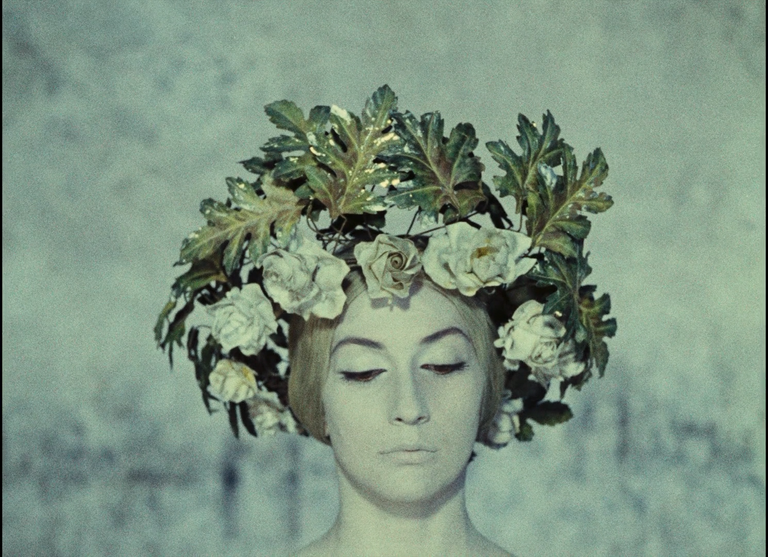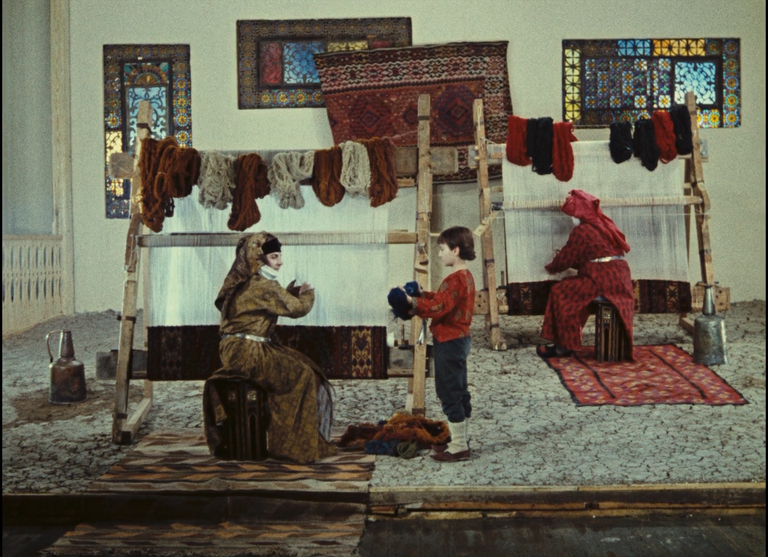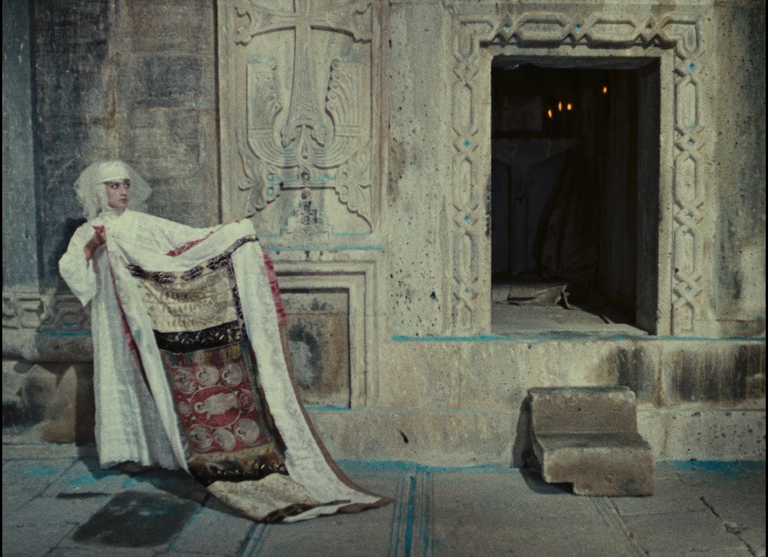
I had never seen an Armenian film until yesterday evening. I had known of maybe two or three relatively known productions from this nation, old classics pretty much, though I just never found the time to watch them. One film in particular caught my attention yesterday while I was searching for Soviet era films to watch, and that was the Armenian film The Colour of Pomegranates. The pomegranate is a highly famous part of Armenian culture, with the trees growing all over the nation and being a symbol of Armenia to this day. In this film, the symbolism of a pomegranate is the bloodshed. The struggles of Armenia as a nation as countless conflicts had led to it being chipped away at over decades, losing the vast majority of its land in the process. With much of present day Turkey, Azerbaijan (two still aggressive nations pursuing total destruction of the Armenian nation) as well as parts of Iran being part of the nation, there's a lot of influence that ranges from slightly European to heavily Eastern. This film, I think, perfectly sums up the Armenian identity, and with a whole lot of weirdness to it that I think many may not fully understand or being able to appreciate.
The Colour of Pomegranate is a hugely artistic film that supposedly details the life and death of a famous poet, though this is met with a more metaphorical sense and cultural sense of his life rather than specific moments of his life. More a film that summarises the Armenian identity which influenced his works, the many things he witnessed and experienced within the Armenian space, and this results in a film that is incredibly strange at a glance. One that almost feels nightmarish, with a pursuit that looks ghostly, though this is intentional with the high spirituality of Armenia even to this day, a nation deeply rooted into Christianity while having an extensive history that expands into multiple empires over many centuries. It's a film that feels unsettling, and it certainly is, but it's an intentional decision to depict the ways in which a person connected to his land, in a way portrays a strong emotion. It's hard to not feel that emotion in parts, no matter how much it may discomfort you and make you want to turn it off.
This is a film I doubt anyone will watch or want to watch based on the screenshots or text within this review, though it's pretty much impossible to spoil with the sort of story it has.

The Colour of Pomegranates plays out like a dream. A film that is almost like a music video and documentary at the same time. This is due to the ways in which its characters look directly into the camera, with a boxed aspect ratio that keeps things tightly kept together within the frame. Much of the scenes feature fixed characters, people that aren't really moving a lot whole, with some very photographic perspectives within the frame. The film pursues this idea of a birth, and a life, as well as inevitable death, but with a lot of connection to God and the religious stances of Armenia. The contemporary religious art that is found throughout the nation even to this day. Large rocks which have had crosses carved out of them, endless monasteries that hold deep connection to the people and land that are used. A lot of the images we see are of simple life, the ways in which people interacted with the space they had, the empty land of Armenia, the dry landscape with nothing but a church. The intensity of the sun as women leave Armenian rugs out in the heat.
The documentary aspect of this film pursues an interest in showing the Armenian identity to its fullest, showing the simple ways of life that its people held back in the era. The types of clothing people wore, the ways in which they held high prestige over these items of clothing through the colours and fragile pieces of fabric that were worn. I really liked these moments, it barely felt as if I was watching a film, but more a recollection of culture down to the smallest of detail. There is a scene in which our child protagonist observes Armenian women as they sew together the rugs, a process that took an extensive sum of time and skill. Naturally religious aspects enter the character's life with the spirituality side of things, his time spent around churches and those of strong religious stances. These scenes are almost like a musical in how the shots are composed, ways in which the characters are spread around in artistic ways. Even down to their movements during certain actions, which shows a unison. Almost a robotic form of repetition in each of them. As if to show one identity.
This is an interesting way to look at things given the era the film was made in. The Soviet Union hated culture, hated religion of any sort. As these two things meant that communities would think and have the ability to form opinions that were not mirroring that of the interests of the government. The communism removing the identity from its people to maintain its power over them, and this is a film purely about its identity, going all-out to display it. The film suffered briefly due to this, as censors ensured it was not released outside of Armenia, and had multiple versions of it made. As well as outright being banned for a short period of time. In fact, the name of the film was even a result of censors ensuring it didn't have its original title which had certain implications. Somehow, The Colour of Pomegranate was approved despite the clear undertone of it meaning Armenia is crushed and bloody. It's a tragic outcome given the importance of culture.
We even see this in the earlier scenes of the film. The slow crushing of a pomegranate from a bare foot. The shape of the pomegranate resembling (then) the nation of Armenia. That firm crushing of a foot from those who control it, push it down, crush its identity into nothing. Removing what the nation loves about itself and takes pride in. Something that wasn't just a result of the Soviet Union, but came with Russian occupation before that. As well as the various other conflicts that unfolded throughout the years (and as mentioned, even to this day). It's a film that is genuinely heartbreaking given how it tries to share its beauty with us, almost barely being about the protagonist poet and his life.

There were times where the film felt so odd to me. With visuals that were rather unsettling due to the music and images. But this is a film that pursues a beautiful style of directing to display its story. One that is very different from the traditional style of filmmaking. Not being about dialogue at all, but about sound and colour more than anything. How these two things are ultimately what create culture, giving identity to something from a unique set of tones and visuals. I think it's a really effective way to get the message across, though you have to be aware of its intent beforehand, otherwise it'll definitely miss with many people.

You make me wonder if I've ever seen a movie from Armenia. Will put this title on my watchlist. It sounds intriguing.
Films from this part of the world can be interesting. Especially the older ones. A lot of cultural, simple life stories. Naturally with the USSR having their influence and encouraging certain stories to be told and censoring things. Annoyingly, the vast majority are to no surprise just war propaganda.
You're right, this is a movie I've never had the chance to see nor have I heard 😂😂
I somewhat like documentaries but it's more of a testimg genre so it's possible I won't like this 😂😂
I would check it out though...
Thanks for sharing ✨
Check it out, though I suspect you'll find it a bit odd!
Yeehaw! A cinematic journey as wild as the west, showcasing the heart and soul of Armenia. Great to see unique cultures celebrated in art!